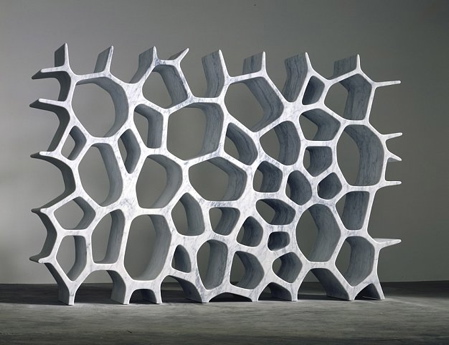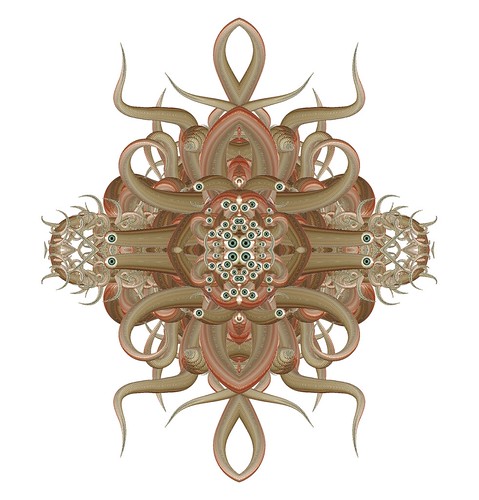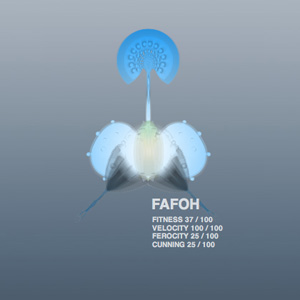by xing @ 8:18 am 16 February 2012
Georg Nees (Germany)
He was pupil of Max Bense, the founder of the Information Aesthetics. He, together with Herbert Franke and Frieder Nake is the pioneer of ComputerArt in Europe. The following the the work from him. He is in the first generation of digital artist. Though due to the limitation of the hardware and software at that time, the art work is not very flashy. However, you can still see the randomess which is always used in visual digital art.

Tape Recorders
Rafael Lozano-Hemmer is a Mexican electronic artist, who develops interactive installations that are at the intersection of architecture and performance art. “Tape Recorders” is one of his recent installation which was commissioned by the Museum of Contemporary Art in Sydney. http://www.lozano-hemmer.com/tape_recorders.php
This work inspires me to think the concept of circle. The end point is the same to the start point. And the repetition in it is just like the way we live our lives, and everyday. And it is very good to see the instant feedback from the work towards the observers. If later I want to add interaction into the work. It is good to make the interaction rapid and understandable for the observers. If there is something that I would add to the work, is that I would make the recorder much more longer like 20 feet-long to make it more dramatic.
[vimeo=http://vimeo.com/34533540]
Unusual Anatomical Flowers
by Macoto Murayama http://www.frantic.jp/en/artist/artist-murayama.html
Murayama takes his chosen flower and dissects it using a scalpel to reveal the “hidden mechanical and inorganic elements”, which are then sketched, then modelled using 3ds MAX, before being finished up in Photoshop and Illustrator. The results are wonderfully digitalized representations of the intricate engineering that is present in Mother Nature’s handiwork. It is good to see how the artist transform “the real life” into digital format with a very rich and complete way of storing it.


Comments Off on Xing-Looking outwards-3
by John Brieger @ 4:53 am
Pascal Dombis : Géométries Irrationnelles (2008)

[youtube=”http://www.youtube.com/watch?v=hwgxHFIHM9c”]
I liked this piece for simpleness of the interaction and the generation of the forms. A more modern take on earlier computation art techniques, using vibrant color and a small degree of interactivity.
Michael Hansmeyer : Computational Columns

Michael Hansmeyer’s Columns
An interesting play on subdividing a doric column using algorithmic patterns. Functional, beautiful, and computational. Could this class really ask for more?
And one more super cheaty one from class that was briefly mentioned:
Marc Newson’s Voronoi Shelves

Comments Off on John Brieger — Looking Outwards 3 (Generative Art)
by Joe @ 4:13 pm 15 February 2012

Starting with another relatively light generative project, this project was done as a Halloween present for the creator’s children. The monsters were created by algorithmically placing “monster bits” like tentacles and eyeballs from a kit of parts. This is an extremely straightforward application of generative programming, but one that is quite appealing to me. The graphics used here are pleasant but not particularly inspired, but I could see a similar system being used to create some really inspirational stuff. For example, generating silhouettes for Monster designs based on a given physiological feature (Make me some tentacle monsters, some quadrupeds, some stuff with shells, etc).

Evolution picks up on the trail blazed by many of the genetic algorithms we discussed in class, specifically Ludivine Lechat’s Graphical Cellular Domestication. The program creates organisms from a template, assigning each various properties based on each creature’s taxonomy. Each creature can then go on to mate and predate, passing on its computational DNA to future generations. The notion of dynamically generating creatures is very appealing to me from a purely aesthetic view, while the notion that physical characteristics and inherited data can affect their behavior makes this sort of project highly compelling.

Simple concept, elegant execution. Cell-F essentially takes data from the classic Game of Life program and stacks results from each generation vertically. When these points are translated into 3D volumes, they take on a sort of eerie hybrid of the orthogonal and biological.
Comments Off on Joe Medwid – Looking Outwards – 3








